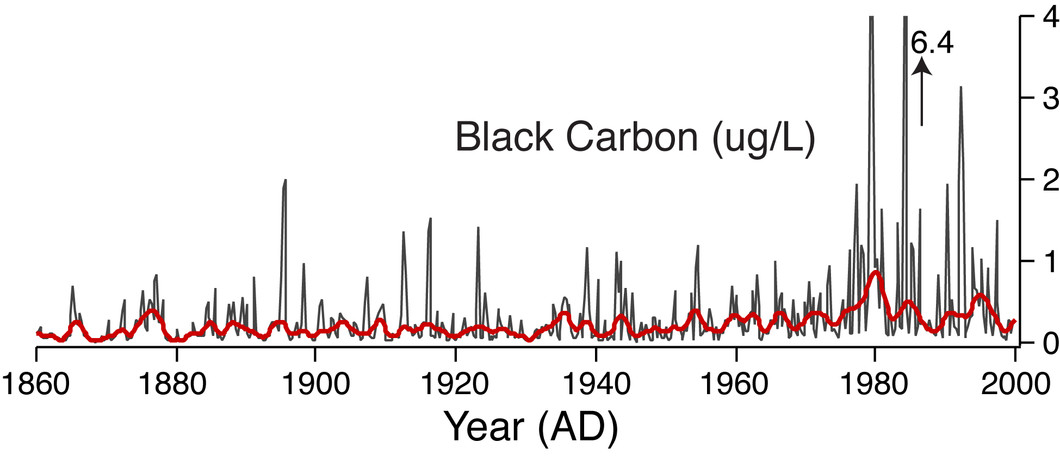Recent increase in black carbon concentrations from a Mt. Everest ice core spanning 1860–2000 AD
Research Division Biology and Chemistry (BIO), Analytical Chemistry Group, Head Margit Schwikowski.
A Mt. Everest ice core spanning 1860–2000 AD and analyzed at high resolution for black carbon (BC) using a Single Particle Soot Photometer demonstrates strong seasonality, with peak concentrations during the winter‐spring, and low concentrations during the summer monsoon season. BC concentrations from 1975–2000 relative to 1860–1975 have increased approximately threefold, indicating that BC from anthropogenic sources is being transported to high elevation regions of the Himalaya. The timing of the increase in BC is consistent with BC emission inventory data from South Asia and the Middle East, however since 1990 the ice core BC record does not indicate continually increasing BC concentrations. The Everest BC and dust records provide information about absorbing impurities that can contribute to glacier melt by reducing the albedo of snow and ice. There is no increasing trend in dust concentrations since 1860, and estimated surface radiative forcing due to BC in snow exceeds that of dust in snow. This suggests that a reduction in BC emissions may be an effective means to reduce the effect of absorbing impurities on snow albedo and melt, which affects Himalayan glaciers and the availability of water resources in major Asian rivers.
